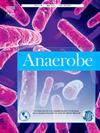Prevalence of toxigenic Clostridium botulinum in food products sold in Indian retail markets
IF 2.6
3区 生物学
Q3 MICROBIOLOGY
引用次数: 0
Abstract
Introduction
Clostridium botulinum and botulinum neurotoxins have been recognized as an important food safety hazard. The objective of this study was to screen the prevalence of C. botulinum and botulinum toxin in various food products sold in the retail markets of India.
Material and methods
A total of 236 food products collected from Indian retail markets were screened for preformed botulinum toxin using a mouse bioassay. This was followed by enrichment and isolation and further testing of isolates for botulinum toxin production using an additional mouse bioassay. A toxin neutralization test with type specific antitoxins, 16S rRNA gene sequencing and BoNT (botulinum neurotoxin) gene amplification confirmed the presence of C. botulinum and its toxin production potential.
Results and discussion
Preformed botulinum toxin was not detected in any of the products. The overall prevalence of C. botulinum in the products was 11 %, but pure cultures of C. botulinum could be isolated only from 10 samples. The isolates were identified as C. botulinum type A, type B and type E based on toxin typing with type specific antitoxins and amplification of the botulinum neurotoxin (BoNT) gene. One of the isolates was designated as C. botulinum subtype A1B. This is the first report of isolation of C. botulinum type E and subtype A1B in seafood from India. The presence of C. botulinum in the products tested can be a significant public health hazard since the organism can grow when exposed to favourable conditions and can produce neurotoxin in the food.

在印度零售市场销售的食品中产毒梭菌肉毒杆菌的流行。
肉毒杆菌和肉毒杆菌神经毒素已被公认为重要的食品安全危害。该研究的目的是筛选在印度零售市场上销售的各种食品中肉毒杆菌和肉毒毒素的流行情况。材料和方法:采用小鼠生物测定法对从印度保留市场收集的244种食品进行预成型肉毒杆菌毒素筛选,然后对分离培养物进行富集和肉毒杆菌毒素检测。毒素中和试验与类型特异性抗毒素,16S rRNA测序和BoNT(肉毒毒素神经毒素)基因扩增证实了肉毒杆菌的存在和它们的毒素生产潜力。结果与讨论:未检出预制肉毒杆菌毒素。产品中肉毒杆菌的总流行率为10%,但仅从10份样品中分离到肉毒杆菌纯培养物。基于型特异性抗毒素分型和肉毒神经毒素(BoNT)基因扩增结果,分离株分别为A型、B型和E型肉毒杆菌。其中一株被鉴定为肉毒杆菌A1B亚型。这是首次报道从印度海产品中分离出肉毒杆菌E型和A1B亚型。受测产品中肉毒杆菌的存在可能对公众健康造成重大危害,因为这种生物在有利条件下可以生长,并在食物中产生神经毒素。
本文章由计算机程序翻译,如有差异,请以英文原文为准。
求助全文
约1分钟内获得全文
求助全文
来源期刊

Anaerobe
生物-微生物学
CiteScore
5.20
自引率
8.70%
发文量
137
审稿时长
76 days
期刊介绍:
Anaerobe is essential reading for those who wish to remain at the forefront of discoveries relating to life processes of strictly anaerobes. The journal is multi-disciplinary, and provides a unique forum for those investigating anaerobic organisms that cause infections in humans and animals, as well as anaerobes that play roles in microbiomes or environmental processes.
Anaerobe publishes reviews, mini reviews, original research articles, notes and case reports. Relevant topics fall into the broad categories of anaerobes in human and animal diseases, anaerobes in the microbiome, anaerobes in the environment, diagnosis of anaerobes in clinical microbiology laboratories, molecular biology, genetics, pathogenesis, toxins and antibiotic susceptibility of anaerobic bacteria.
 求助内容:
求助内容: 应助结果提醒方式:
应助结果提醒方式:


